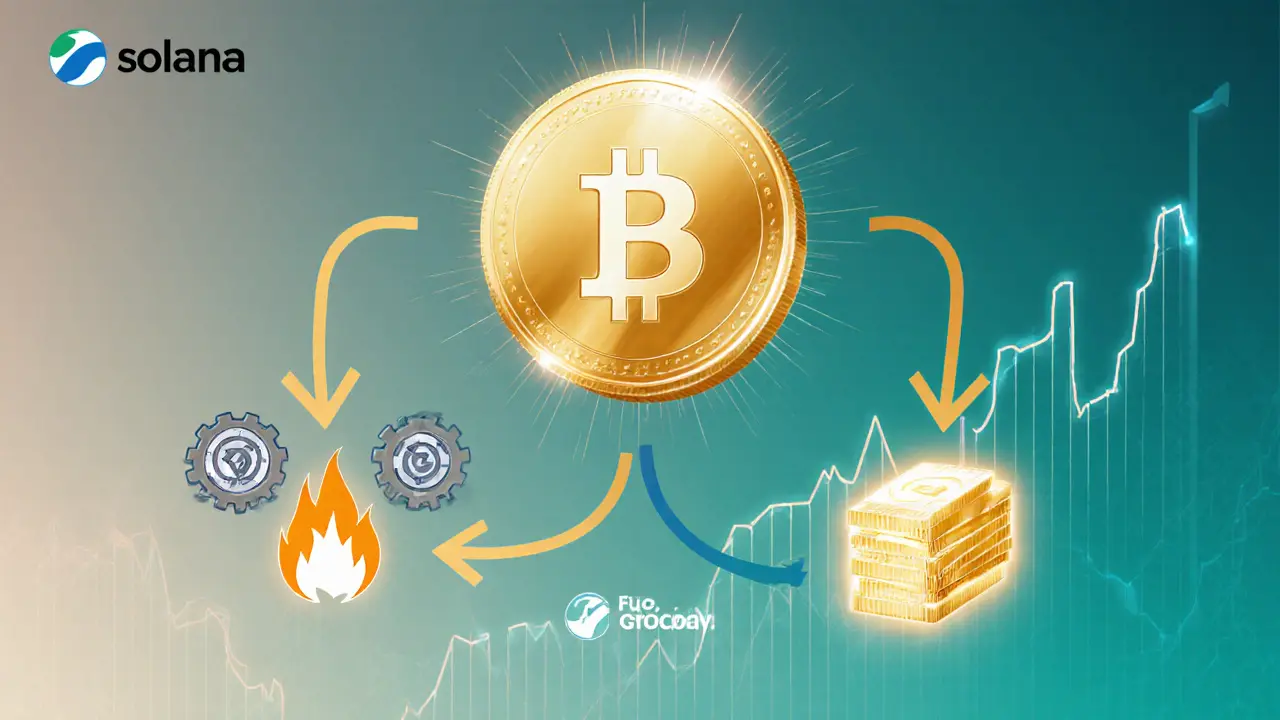BERRIE Staking Calculator
Calculate your estimated BERRIE token rewards based on current trading volume and your staked amount. The calculator uses the fee buyback mechanism described in the article.
Estimated Staking Rewards
Based on current trading volume of $0 per day.
Important Note: This is an estimation based on the fee buyback mechanism described in the article. Actual rewards may vary depending on:
- Changes in daily trading volume
- Token price fluctuations
- Network gas fees
- Unaudited platform mechanics
When you hear the name Berrie Dex (BERRIE) token is the native utility token of BerrieDex, a non‑custodial multi‑chain order‑book DEX launched in 2023. It promises seamless trading across nine blockchains without the usual wrapping or bridging hassles. If you’re trying to decide whether this token matters for your DeFi strategy, this guide breaks down the technology, tokenomics, supported networks, and the real‑world risks.
How BerrieDex Works - Order‑Book Meets Multi‑Chain
Most decentralized exchanges rely on automated market makers (AMMs). BerrieDex flips the script by using an order‑book model, similar to a traditional centralized exchange. Traders can place precise limit orders or market orders, and the platform’s proprietary matching engine aggregates liquidity from all nine supported networks in real time.
The key claim is that it does this without a bridge. Instead of moving assets between chains, the engine matches orders across chains and settles them on‑chain, converting all fees into BERRIE token and redistributing them to stakers. While the exact settlement mechanics are not publicly audited, the architecture is described as a “bridgeless” cross‑chain engine.
Tokenomics - Fixed Supply, Eternal Buy‑Back
The BERRIE token lives on Solana a high‑throughput blockchain that hosts the token contract. Its total supply is fixed at 10,000,000 tokens, with no minting beyond that cap. Every trade on BerrieDex generates a fee that is automatically used to buy back BERRIE on the open market, a model the team calls “eternal buy pressure.” The bought‑back tokens are then burned or sent to a staking contract, theoretically reducing circulating supply over time.
Because 100% of fees are funneled back, the token’s price is tightly linked to platform activity. Higher trading volume should, in theory, push the price up, while a lull could lead to stagnation.
Supported Blockchains and Wallet Integration
BerrieDex currently supports nine networks: Ethereum, BNB Chain, Solana, Arbitrum, Optimism, Avalanche, Polygon, Base, and Algorand. For wallet connectivity the platform officially supports MetaMask, Phantom, and Trust Wallet. Users simply click “Connect Wallet,” select the appropriate network, and start trading.

How BerrieDex Stacks Up Against Other DEXs
| Feature | BerrieDex | 1inch | Serum | dYdX |
|---|---|---|---|---|
| Order type | Limit & market (order‑book) | Market only (AMM) | Limit & market (order‑book) | Limit & market (order‑book) |
| Cross‑chain support | 9 chains (bridgeless) | 20+ chains (via aggregators) | Solana only | StarkNet only |
| Fee model | All fees converted to BERRIE & redistributed | Standard fee + optional token rebate | Standard fee, no token buy‑back | Standard fee, staking rewards separate |
| 24‑h volume (Oct2023) | $0.5M | $1.2B | $30M | $120M |
| Audit status | No public audit | Multiple audits | Audited (Solana) | Audited (StarkNet) |
From the table you can see BerrieDex’s unique selling point is its order‑book on nine chains without a bridge. The trade‑off is low adoption (sub‑million daily volume) and a lack of independent security audits.
Risks, Criticisms, and Red Flags
Several experts have raised concerns:
- Anonymous team: No founders are publicly identified, making accountability difficult.
- No audit: Security reviews are absent, a red flag for institutional investors.
- Circ circulating supply ambiguity: Some data providers show zero tokens in circulation despite active trading, hinting at possible manipulation.
- Regulatory exposure: The token sale’s price‑step structure could be viewed as a securities offering under the Howey Test.
- Opaque settlement: Users report confusion about where cross‑chain swaps actually settle, calling the process “magic.”
While the concept of fee redistribution is sound, the execution lacks transparency. If you value security and clear governance, treat BerrieDex as a high‑risk experimental platform.
Step‑By‑Step: Getting Started with BerrieDex
- Install a supported wallet (MetaMask for EVM chains, Phantom for Solana, or Trust Wallet for multi‑chain). Ensure it holds some native token for gas (ETH, BNB, SOL, etc.).
- Visit berr.ie and click “Connect Wallet.” Choose the appropriate network.
- Deposit the asset you want to trade. The interface will display a unified order‑book spanning all supported chains.
- Place a limit order if you need a specific price, or a market order for instant execution. Confirm the transaction in your wallet.
- After the trade settles, you’ll see a portion of the fee automatically converted into BERRIE and added to your staking balance (viewable in the “Earn” tab).
- To withdraw, simply disconnect your wallet and send assets back to your personal address. Staked BERRIE can be claimed at any time.
For beginners, start with a tiny amount (e.g., $10‑worth of ETH) to get a feel for the cross‑chain UI. Monitor the staking rewards weekly to gauge the fee‑to‑token conversion rate.
Key Takeaways
- BerrieDex offers a unique order‑book DEX that works on nine major blockchains without bridges.
- The BERRIE token has a fixed 10million supply and all trading fees are used to buy back and stake the token.
- Adoption is modest; 24‑hour volume is under $1million, far below established aggregators.
- Major concerns include an anonymous team, no security audits, and unclear cross‑chain settlement mechanics.
- If you’re comfortable with high risk and want to experiment with a novel multi‑chain DEX, start small and keep a close eye on staking returns.
Frequently Asked Questions
What networks can I trade on with BerrieDex?
BerrieDex supports Ethereum, BNB Chain, Solana, Arbitrum, Optimism, Avalanche, Polygon, Base, and Algorand. You can trade assets on any of these chains without moving them through a bridge.
How are fees used?
Every trade fee is automatically converted into BERRIE tokens and sent to a staking contract. Stakers receive a share of the newly purchased tokens, creating a continuous buy‑back effect.
Is BerrieDex audited?
As of October2025, the protocol has not published any independent security audit. This is a major risk factor for users who prioritize safety.
Can I earn passive income with BERRIE?
Yes. By staking BERRIE you receive a portion of the fees that are converted into new tokens. The exact APY varies with trading volume and is displayed in the platform’s “Earn” section.
What are the main drawbacks of using BerrieDex?
Low liquidity, lack of audited code, opaque cross‑chain settlement, and an anonymous development team are the biggest concerns. New users should start with minimal funds and monitor the platform closely.


Author
Ronan Caverly
I'm a blockchain analyst and market strategist bridging crypto and equities. I research protocols, decode tokenomics, and track exchange flows to spot risk and opportunity. I invest privately and advise fintech teams on go-to-market and compliance-aware growth. I also publish weekly insights to help retail and funds navigate digital asset cycles.